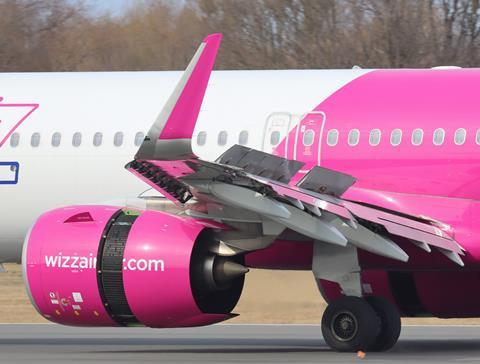For an industry historically known for its tendency towards overcapacity and therefore frequently low-margin operations, the airline sector is uncharacteristically about it enter its sixth year of not being able to fly as much as it would like.
Looking into 2024, industry leaders are acknowledging that a mixture of supply-chain challenges, MRO delays and groundings relating to issues with Pratt and Whitney PW1100G engines will weigh on capacity, with hundreds of aircraft forecast to be out of action in the coming months.
In the past few days and weeks, airlines everywhere – including Aegean Airlines, EasyJet, Lufthansa and Wizz Air in Europe; Air New Zealand, Cebu Pacific and IndiGo in the Asia-Pacific region; and JetBlue Airways, Spirit Airlines and Volaris in the Americas – have been lining up to either moderate their capacity expectations or point out that competitors will fall short of capacity forecasts. Some note that while the situation is not ideal, the consequent tight supply-demand balance, and therefore higher yields, are a welcome byproduct.

The context for this capacity challenge is important, partly because of its longevity.
In the 12 months leading up to the Covid-19 pandemic, it was the grounding of hundreds of Boeing 737 Max jets that moderated industry capacity. Then, the pandemic saw at least 18 months of groundings that took in thousands of aircraft. Coming out of the pandemic, the Max jets were back, but airport capacity challenges and supply-chain and MRO issues in the aerospace sector – frequently caused by staffing shortages and a lack of expertise in particular – meant many airlines had to moderate the pace of their emergences from the crisis. Those supply-chain and MRO challenges persist today.
The other crucial piece of context is that, so far, three years of capacity growth has been lost to the Covid-19 pandemic – and, to a lesser extent, the geopolitical challenges that have followed – with the global airline industry only projected to reach parity with 2019 capacity next year. As a result, matching 2019 figures still leaves industry capacity many percentage points off where it might have been in 2024, based on pre-Covid growth forecasts.
It is difficult to escape the conclusion that Lufthansa Group chief executive Carsten Spohr was on to something when he said, more than a year ago: “Capacity development will be limited by several factors… probably for years to come.”
















